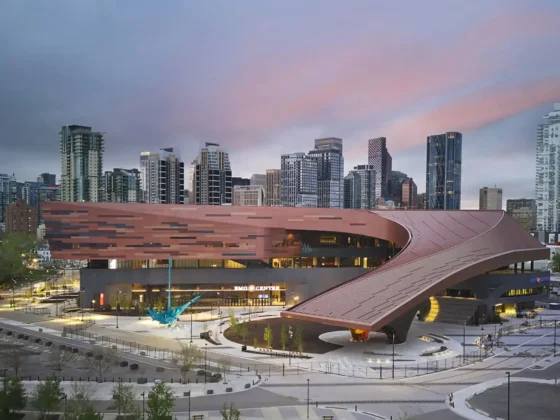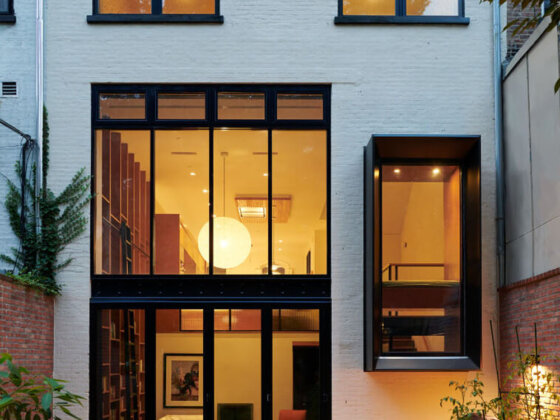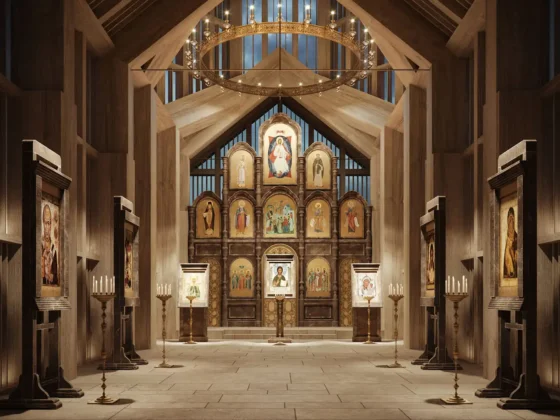Bilbao, Spain
Gonzalo Carro with Fernando Garrido and Ignacio Angulo of IDOM has repurposed the neglected Bizkaia Tower in Bilboa into a mixed-use development where the first six floors contain spaces for commercial use, keeping the rest of the floors for office use.

The Integral Reform of the Bizkaia Tower project has recently been awarded a 2022 International Architecture Awards Honorable Mention by The Chicago Athenaeum: Museum of Architecture and Design and The European Centre for Architecture Art Design and Urban Studies.
Given the state of the building, it was necessary to completely empty it, keeping only the structure to undertake a comprehensive reconstruction.
The building’s structure, made up of metal pillars and beams covered with concrete for fire protection purposes, has also been reformed with generalized reinforcements on the commercial floors and on the office floors where public use is foreseen.
With the exception of the central block of elevators and stairs in the tower, the rest of the communication cores have been demolished and their gaps closed, to generate other locations with greater capacity in new communication cores.
Other far-reaching structural changes have been undertaken as a result of functional conditioning factors in the commercial area, such as the implantation of an opening that connects 5 floors of the building with escalators and that has required the elimination of one of the building’s main beams.
This led to the need to include new bracing elements.

Another key aspect of the reform has focused on the facade of the building, protected by municipal regulations.
Prior to commencing with the drafting of the façade construction project, research and data collection work was carried out to be able to build a façade with identical characteristics as the original, correcting the modifications that the building had undergone over the years.
Given that some of the original glass remained on the Gran Vía façade, it could be used to exactly reproduce the original color, manufacturing the solar control layer with a state-of-the-art magnetron.
The end result has been a façade identical to the original, but very different from the image that the building offered prior to renovation.

On the ground floor, the façade pillars have been covered with marble, identical to the original and the panels between them have been closed with large glass and hidden profiles that avoid detracting from the façade.
The entrance to the commercial zone is from the public square in front of the building.
Access to the office area is through Gran Via street, as was the case prior to the renovation.
The lobby is a smaller lobby as the space on the ground floor has been given over to commercial space.
Inside, there were practically no outstanding original elements, as the building had undergone numerous interior renovations throughout its life.
Designing an entrance according to the tower was another challenge of the project, especially given the geometry of the existing, narrow, and elongated space that could generate a tunnel effect.

In addition, in this space beside the street, there are three evacuation exits and access to two service elevators for the commercial premises, two ATMs, and access for maintenance.
For this reason, it was decided to divide this lobby into two areas, one outside as a hallway where the spaces described above converge and then the lobby itself with its reception area, elevator block, and waiting room.
The strategy focused on integrating and concealing all the existing elements on the walls, especially the doors.
For this, a square section corrugated sheet was designed, which concealed the hinges, joints, and fittings of the doors, offering a clean image of this space.
This sheeting was placed both on the ceiling and on the walls, using white lacquered steel on the inside and anodized aluminum on the outside hallway.

The office floors have been designed using the Core and Shell concept and all the installations are closed and ready to be connected, except for the fire protection installation that has been completely installed.
In the original vaults, warehouses of a special character were created, keeping the armored doors and enhancing the original concrete walls.
These spaces have been complemented with warm elements such as carpeting, wood, and sound-absorbing felt slats or perforated sheet metal panels, in order not to completely lose the original character of the building.





Project: Integral Reform of the Bizkaia Tower
Architects: IDOM
Lead Architect: Gonzalo Carro
Design Team: Fernando Garrido and Ignacio Angulo
General Contractor: BYCAM
Client: AG TL
Photographers: Aitor Ortiz












